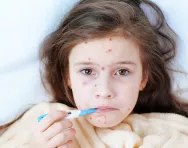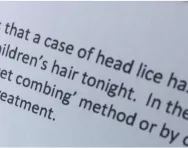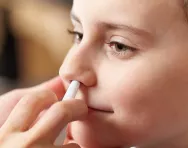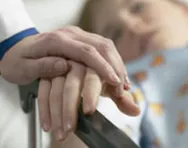Important update from TheSchoolRun
For the past 13 years, TheSchoolRun has been run by a small team of mums working from home, dedicated to providing quality educational resources to primary school parents. Unfortunately, rising supplier costs and falling revenue have made it impossible for us to continue operating, and we’ve had to make the difficult decision to close. The good news: We’ve arranged for another educational provider to take over many of our resources. These will be hosted on a new portal, where the content will be updated and expanded to support your child’s learning.
What this means for subscribers:
- Your subscription is still active, and for now, you can keep using the website as normal — just log in with your usual details to access all our articles and resources*.
- In a few months, all resources will move to the new portal. You’ll continue to have access there until your subscription ends. We’ll send you full details nearer the time.
- As a thank you for your support, we’ll also be sending you 16 primary school eBooks (worth £108.84) to download and keep.
A few changes to be aware of:
- The Learning Journey weekly email has ended, but your child’s plan will still be updated on your dashboard each Monday. Just log in to see the recommended worksheets.
- The 11+ weekly emails have now ended. We sent you all the remaining emails in the series at the end of March — please check your inbox (and spam folder) if you haven’t seen them. You can also follow the full programme here: 11+ Learning Journey.
If you have any questions, please contact us at [email protected]. Thank you for being part of our journey it’s been a privilege to support your family’s learning.
*If you need to reset your password, it will still work as usual. Please check your spam folder if the reset email doesn’t appear in your inbox.
The parents' guide to scarlet fever

Scarlet fever might sound like a condition afflicting heroines in Victorian novels, but it’s a very real threat to primary school children today.
The highly contagious childhood illness is at a 50-year high, with over 19,000 cases in the UK in 2016, the majority in England.
Although most children bounce back from scarlet fever, it can be dangerous, and doctors are urging parents to familiarise themselves with the symptoms.
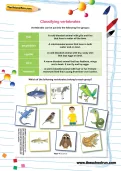

Download fantastic science resources today!
- Experiments And Science Fun pack
- Science Learning Programme for each school year
- All the instructions, questions and information you need
What is scarlet fever?
Scarlet fever is a bacterial infection that mainly affects children under 10. It’s also known as scarlatina.
It was once a common cause of childhood death, but these days, it’s rarely serious and can be treated with antibiotics.
However, it’s important to get a quick diagnosis and the right treatment to prevent complications.
‘Knowing what to look for can help the infected child to get the treatment they need, fast, and avoid spreading this highly infectious disease,’ says Gary Ellis from health and safety training provider CE Safety.
What are the symptoms?
The early signs of scarlet fever are similar to many other childhood viruses and infections, and include:
- Sore throat
- Headache
- High temperature
- Swollen glands in the neck
- Vomiting
As the illness progresses, children usually develop a distinctive rash.
The scarlet fever rash usually starts on the chest or tummy, then spreads to other areas. It’s red and blotchy, and the patches may join up. The rash feels like sandpaper if you rub your hand across it, and may be particularly livid in skin folds like the elbows and armpits. It turns white if you press a glass against it.
The rash tends not to spread to the face, but your child may have bright red cheeks that look like they’re sunburnt.
The other trademark symptom of scarlet fever is a white coating that forms on the tongue and then peels away, leaving the tongue red and swollen. This is known as ‘strawberry tongue’.
How is it transmitted?
Scarlet fever spreads very easily. It’s a droplet infection, meaning it’s spread in the airborne droplets from coughs and sneezes.
This explains why it’s particularly common in primary school children, who spend most of their day in close contact with each other.
‘It’s important that we all remain vigilant,’ says Gary.
Scarlet fever can also be contracted from contact with contaminated bedding, towels and clothes, and from sharing bathwater with someone who’s infected.
Treating scarlet fever
If you think your child has symptoms of scarlet fever, see your GP as soon as possible. They’ll normally be able to make a diagnosis based on the appearance of the rash.
Usually, your child will be prescribed a five- to 10-day course of antibiotics, which reduce the length of time that they’re contagious for, speed up recovery, and help to prevent potentially serious complications like pneumonia and liver failure.
Most people will feel better within a few days, although the skin may continue to peel for several weeks.
If your child has been treated for scarlet fever and it hasn’t improved, or has got worse, after a week, you should take them back to the GP.
About one in 40 cases of scarlet fever needs treatment in hospital.
Once your child has had scarlet fever, it’s unlikely they’ll get it again.
Can scarlet fever be prevented?
Scarlet fever is contagious before the symptoms develop, which makes it difficult to prevent the spread.
It remains contagious until 24 hours after starting antibiotics, or up to three weeks if your child doesn’t have antibiotics.
If you suspect your child has scarlet fever, you should take them out of school immediately and keep them off for at least 24 hours after they’ve started taking antibiotics.
If they are feeling unwell or have a temperature, you’ll probably need to keep them home for longer than that.
Encourage your child to cover their mouth and nose with a tissue when they cough or sneeze, and throw the used tissue away immediately. They should wash their hands with soap and water regularly, and always after using a tissue.
Avoid sharing cutlery, cups and glasses, bed linen, towels, toys, clothes, bathwater and toys while your child is contagious.


